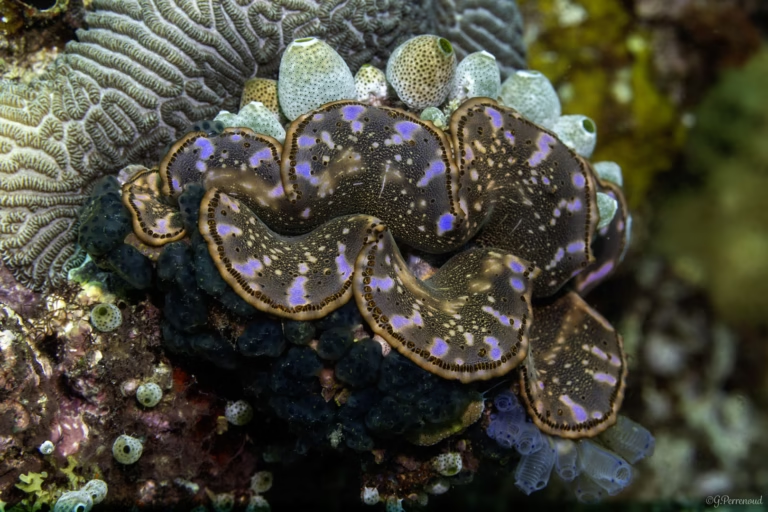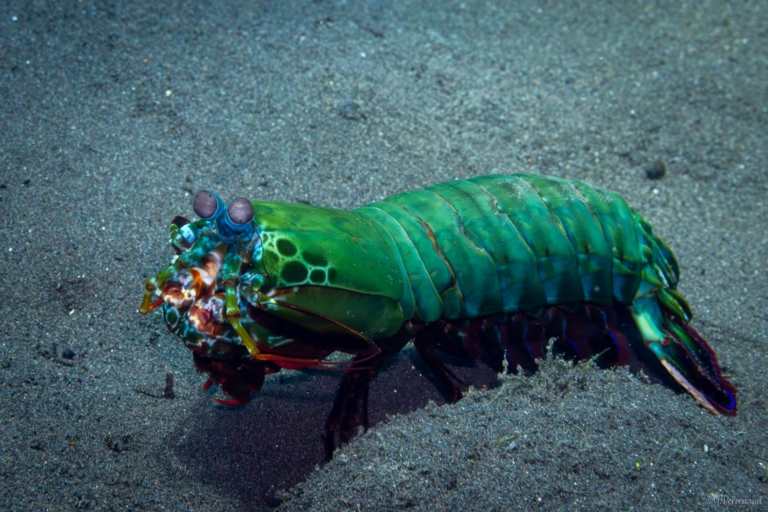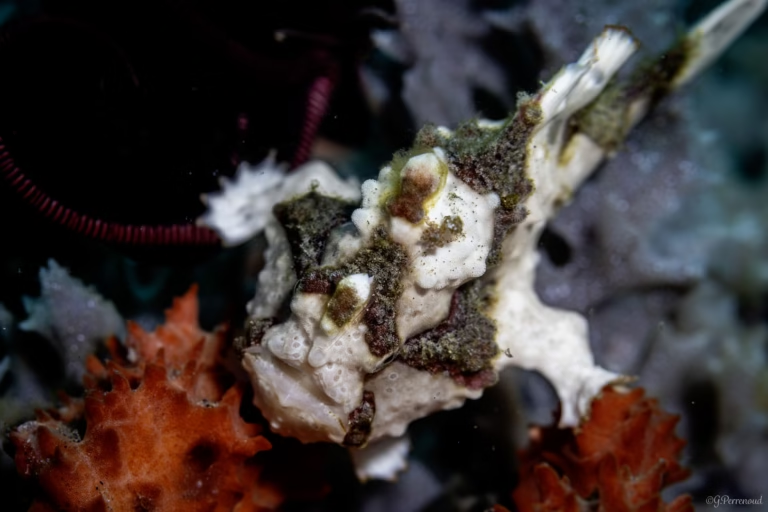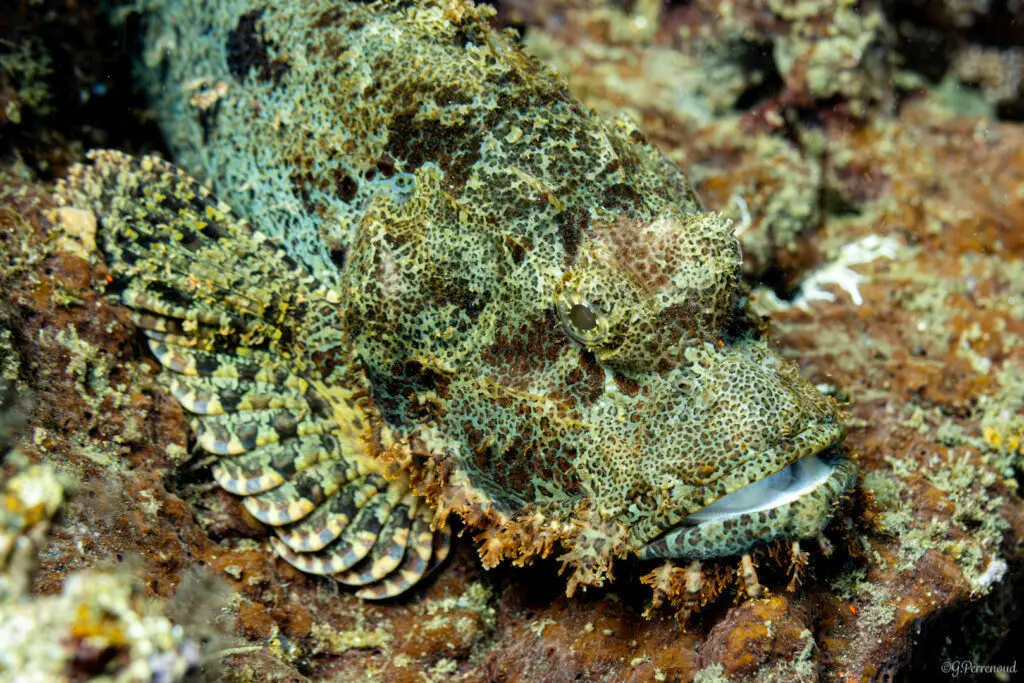
Table of contents
Introduction
Scorpionfishes are a captivating group of marine creatures that inhabit oceans around the world. These fish are renowned for their unique appearance and venomous spines, which render them both intriguing and perilous. Despite their name, scorpionfishes are not directly related to scorpions or spiders. However, they share certain similarities, such as their remarkable ability to camouflage themselves and their potent defense mechanisms.
Scorpionfishes belong to the family Scorpaenidae, which encompasses over 200 distinct species. They exhibit a wide range of colors and patterns, spanning from vibrant oranges and reds to more subdued browns and greens. Their bodies are adorned with bony plates and spines, providing protection against predators and contributing to their unmistakable appearance. Additionally, some scorpionfishes possess fringed or fleshy appendages on their heads, further enhancing their camouflage abilities.
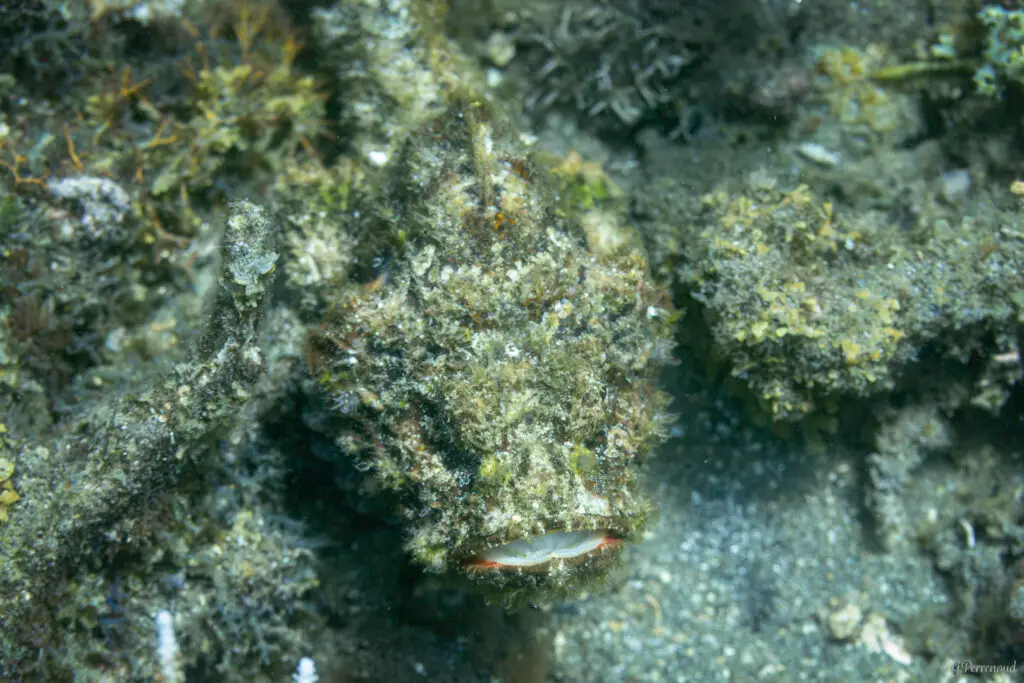
Physical description
1. Mouth and Teeth: Scorpionfishes possess a large mouth equipped with sharp teeth—a formidable combination for capturing prey. Their hunting strategy relies on swift strikes, aided by these specialized dental tools.
2. Vision: Their eyes, perched high on their heads, grant them excellent binocular vision. This visual acuity enables scorpionfishes to precisely gauge the distance to their potential meals.
3. Venomous Spines: The dorsal fins of scorpionfishes feature venomous spines, their most distinctive trait. These spines serve as both weaponry and defense. If inadvertently touched, they can inflict intense pain and swelling on human skin. So, when encountering these fish, exercise caution!
4. Size Variation: Scorpionfishes exhibit a wide size range. Some are mere centimeters long, while others stretch beyond 50 centimeters. Their dimensions vary significantly across species.
5. Camouflage Mastery: Their bodies, adorned with intricate patterns and color variations, serve as natural camouflage. This adaptation allows them to blend seamlessly into their surroundings. Concealing themselves from both predators and prey, scorpionfishes thrive in their marine habitats.
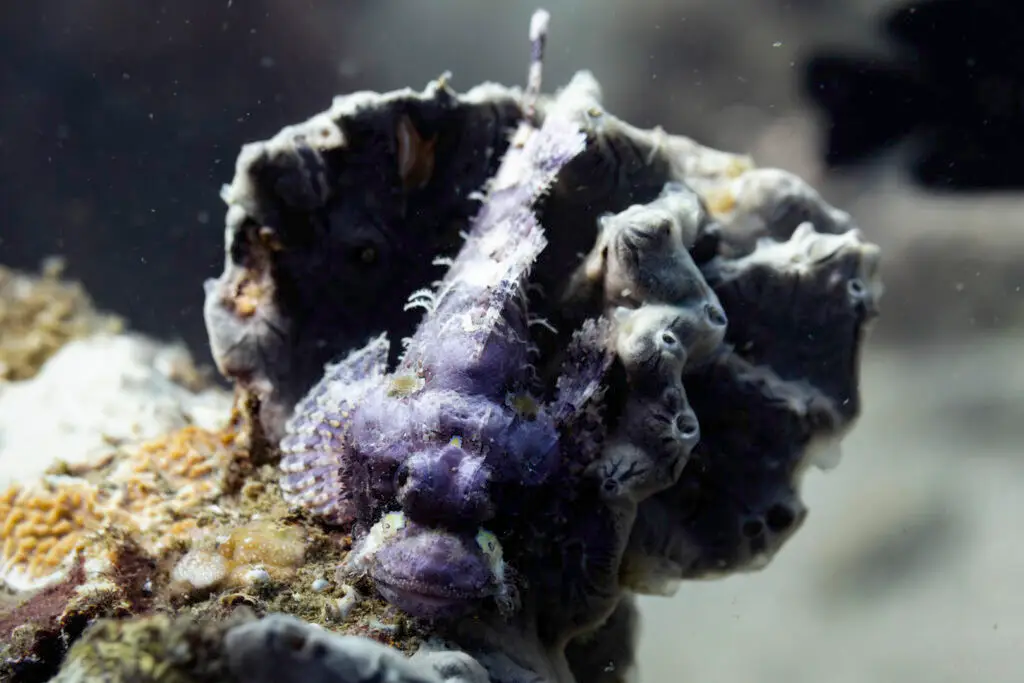
Habitats and distribution
Scorpionfishes are found in a variety of marine habitats, including coral reefs, rocky shores, and sandy bottoms. They are most commonly found in tropical and subtropical waters, but some species can also be found in temperate regions. Scorpionfishes are typically bottom-dwelling fish, but they can also be found at various depths, ranging from shallow coastal waters to deeper offshore areas.
Scorpionfishes can be found in the Indo-Pacific region, the Red Sea, the Mediterranean Sea, and the Atlantic Ocean. Some species have a more limited range, while others are more widely distributed. The exact distribution of each species depends on factors such as water temperature, food availability, and the presence of suitable habitats.
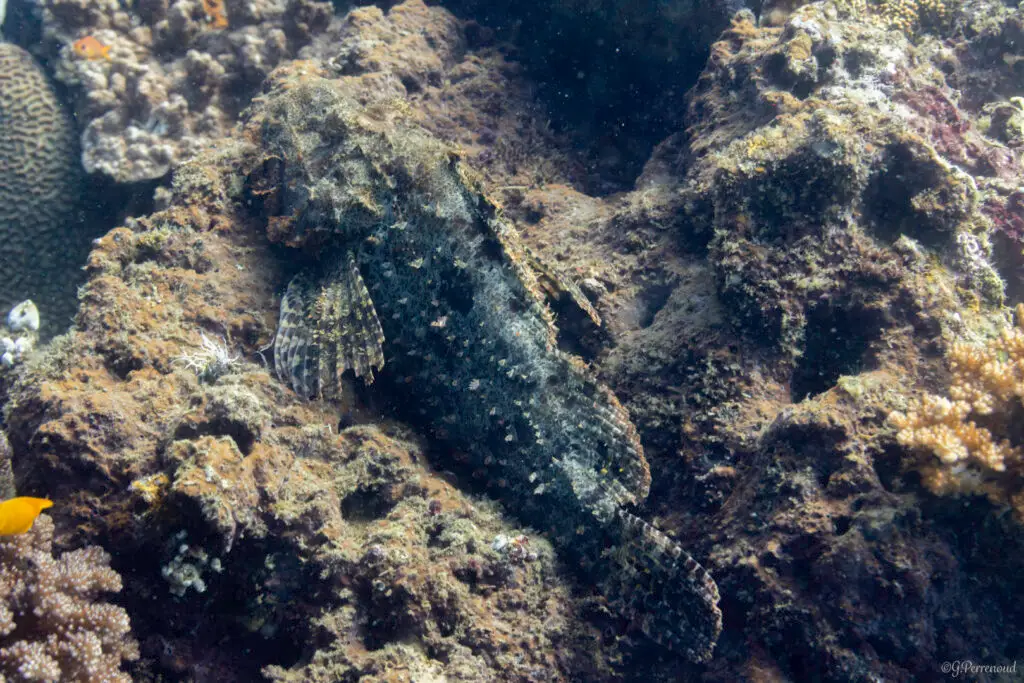
Behavior
The scorpionfishes exhibit intriguing behaviors and survival strategies. Here’s a closer look at their remarkable traits:
- Solitary and Territorial:
- Scorpionfishes are generally solitary beings, preferring their own company.
- However, during mating season, some species may form small groups or pairs for reproductive purposes.
- Hunting Strategy: Sit-and-Wait Ambush:
- Their hunting approach is akin to a patient game of chess.
- Scorpionfishes adopt a sit-and-wait strategy:
- They remain motionless, seamlessly blending into their surroundings they await unsuspecting prey.
- When the moment is right, they lunge forward, jaws wide open, capturing their quarry whole.
- Diverse Diet:
- Scorpionfishes are culinary opportunists:
- They feast on small fish, crustaceans, and other invertebrates.
- Some species employ a unique tactic:
- Venomous Spines: These specialized spines can stun, immobilize or even kill prey.
- However, scorpionfishes typically reserve this potent weapon as a last resort.
- Scorpionfishes are culinary opportunists:
- Camouflage and Stealth:
- Rather than relying solely on venom, scorpionfishes prioritize their camouflage and stealth:
- Their ability to blend seamlessly with their environment ensures successful hunts.
- Predators and prey alike fall victim to their cunning ways.
- Rather than relying solely on venom, scorpionfishes prioritize their camouflage and stealth:
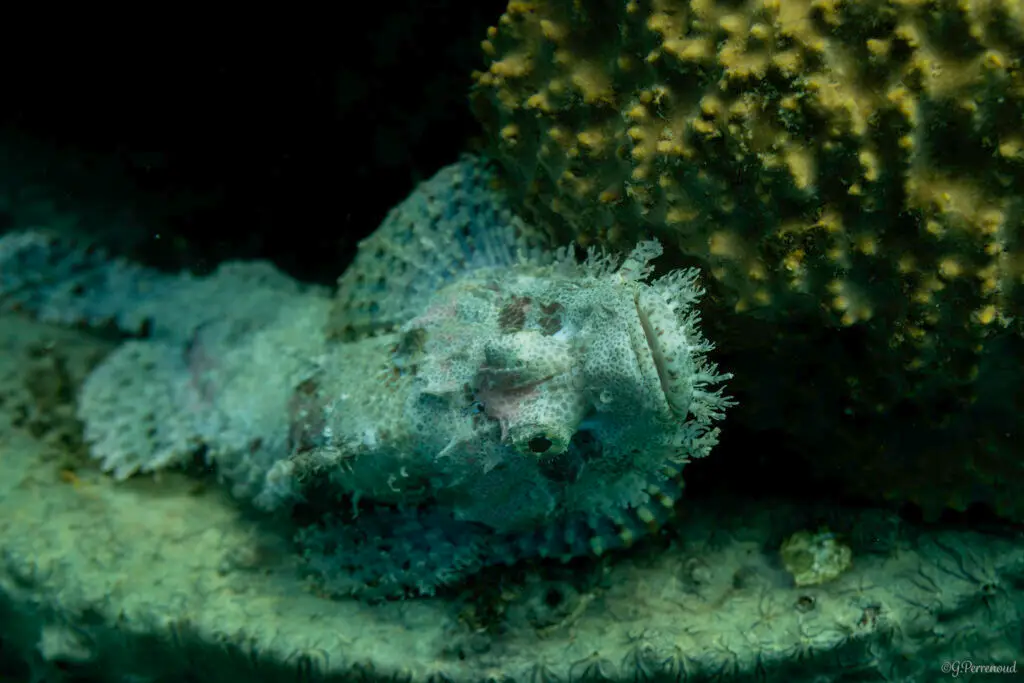
Reproduction and Life Cycle of Scorpionfishes
- Reproductive Behavior:
- Scorpionfishes exhibit diverse reproductive behaviors across species.
- During mating season, males and females converge to spawn. They release their eggs and sperm into the water, where external fertilization occurs.
- The fertilized eggs are then left to develop and hatch independently.
- Larval, Juvenile, and Adult Stages:
- The life cycle of scorpionfishes encompasses three critical stages:
- Larval Stage: Emerging from the eggs, the larvae are often planktonic, drifting in the water.
- Juvenile Stage: As they grow, they undergo physical and behavioral changes.
- Juvenile scorpionfishes may exhibit distinct coloration and patterns compared to adults.
- These differences serve as protective adaptations against predators.
- Adult Stage: Gradually, they acquire the characteristic features and coloration of their species.
- The life cycle of scorpionfishes encompasses three critical stages:
- Adaptation and Survival:
- Throughout this journey, scorpionfishes rely on their camouflage, stealth, and venomous spines for survival.
- Their ability to blend into their surroundings ensures successful transitions from one stage to another.
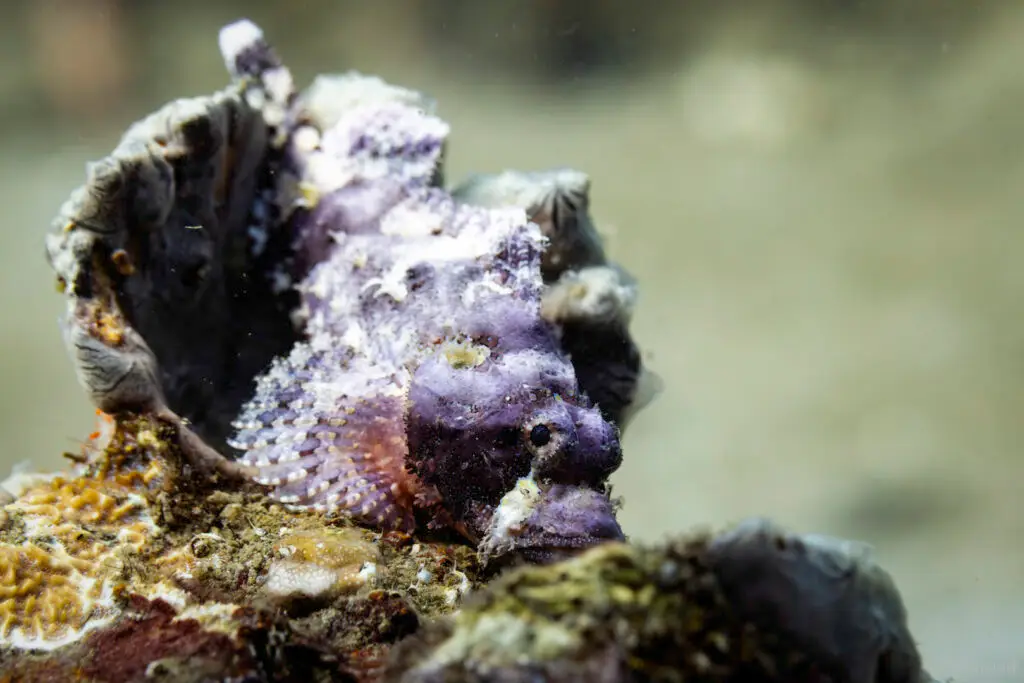
Interactions with Other Marine Species
Scorpionfishes play an important role in the marine ecosystem and have various interactions with other species. As predators, they help to control populations of smaller fish and invertebrates, contributing to the overall balance of the ecosystem. They are also preyed upon by larger predators, such as sharks and groupers, which helps to regulate their own populations.
Some species of scorpionfishes have developed interesting symbiotic relationships with other marine organisms. For example, certain cleaner shrimp and cleaner fish have been observed picking parasites and dead skin off the bodies of scorpionfishes. This cleaning behavior benefits both parties, as the scorpionfishes get rid of unwanted parasites while the cleaner organisms receive a delicious meal.
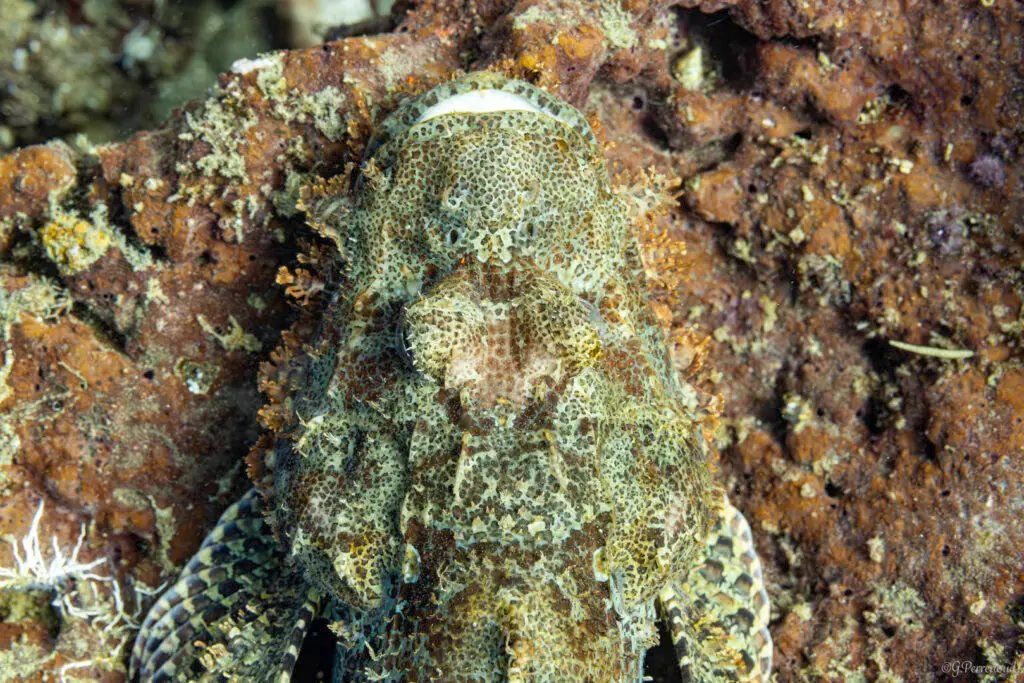
Scorpionfishes in Marine Ecology: Balancing Act
Scorpionfishes play a vital role in maintaining the health and equilibrium of marine ecosystems. Here’s why they matter:
- Predator Role:
- As skilful predators, scorpion fish regulate populations of small fish and invertebrates, ensuring a diverse and prosperous ecosystem.
- Larger predators, like sharks and groupers, rely on scorpionfishes as a crucial food source.
- Threats and Conservation:
- Unfortunately, like most marine species, scorpion fish face a number of threats:
- Habitat Loss: Coastal development and pollution degrade their habitats.
- Coral Reef Destruction: Vital coral reefs, where many scorpionfish species reside, suffer from ocean warming.
- Overfishing: Accidental catches in nets and traps endanger their populations.
- Aquarium Trade: Some species are targeted, exacerbating their decline.
- Unfortunately, like most marine species, scorpion fish face a number of threats:
- Conservation Measures:
- Marine Protected Areas: Establishing these zones restricts harmful activities.
- Sustainable Fishing Practices: Responsible fishing prevents overexploitation.
- Public Awareness: Educating people about scorpionfishes’ importance fosters conservation efforts.
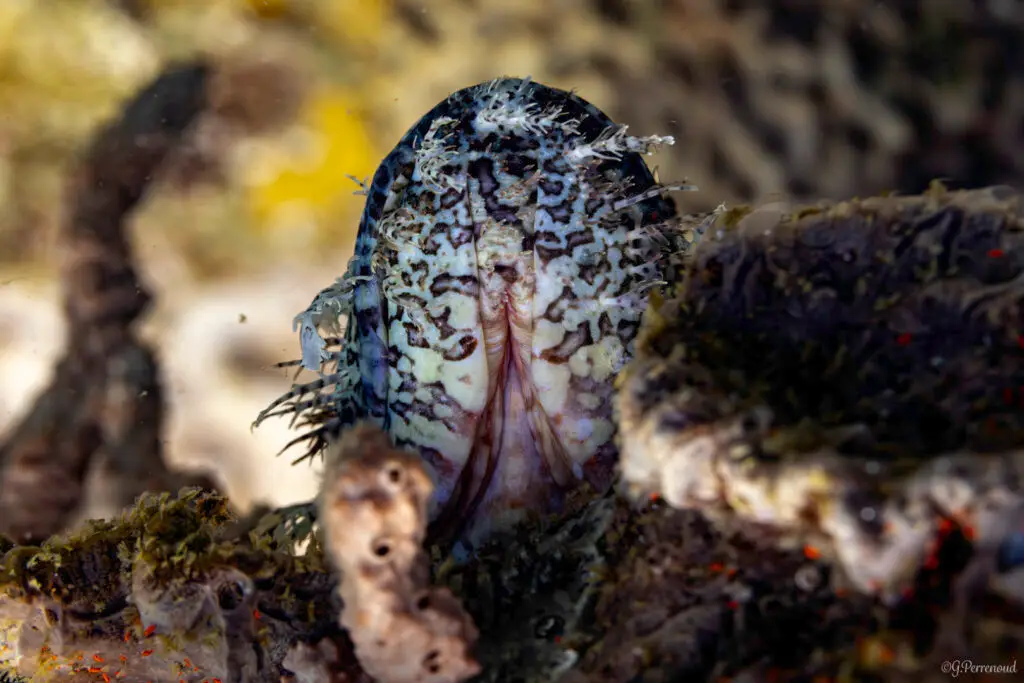
Tips for Observing Scorpionfishes in the Wild
If you want to see scorpionfish in their natural habitat, there are a few things to bear in mind. First of all, never forget that these fish are venomous and can be dangerous. NEVER try to touch them, but observe them from a safe distance.
Scorpionfishes are masters of camouflage, so it may take some time and patience to spot them. Look for areas with plenty of hiding spots, such as coral formations, rocky crevices, and sandy bottoms. Take your time to scan the surroundings and look for any unusual shapes or colors that may indicate the presence of a scorpionfish. If you are lucky enough to spot one, take your time to observe its behavior and hunting strategies. Remember to respect their space and avoid disturbing them.

